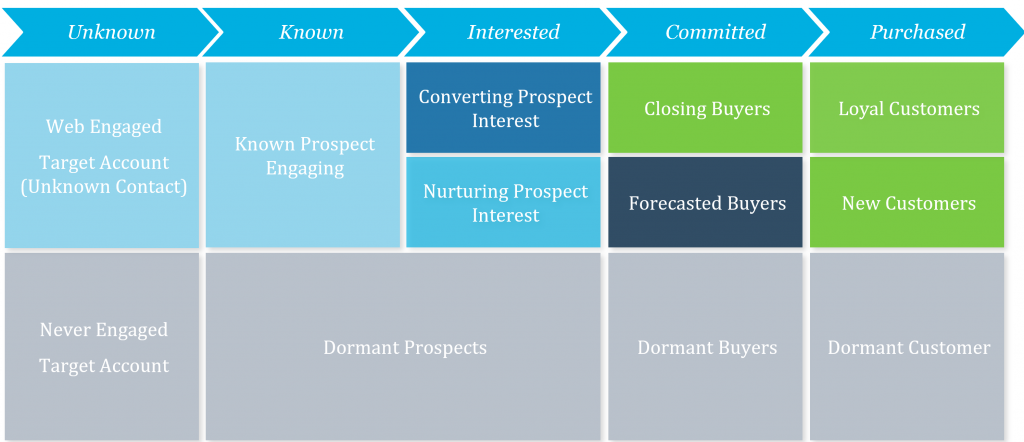Transitioning from face to face to live virtual events is a stressful endeavor – it’s not easy and there are certainly challenges.
For event teams, the transition involves a big change from physical venues to creating something totally different on the small screen, with new technologies to select and adopt, new engagement experiences to consider and deliver, and possibly a changing audience to serve.
So what else can marketing do to further the ROI momentum? The answer is, focus on content.
Now is the time for B2B marketing teams to revisit what may typically be a tactical method for content creation and take a more strategic approach. Chances are you have a content strategy in place, however before immersing yourself in creating content for content’s sake consider the material covered in your virtual sessions as a wealth of information to fill content gaps in support of your customers’ buyer journey.
Here are a few considerations to help you get the most mileage from your virtual event via content creation:
- Customer journey map
- Audience / persona
- Existing content
- Data, and what’s it telling you?
Customer Journey Map
Your customer journey map is a great place to start when identifying gaps in your content. Visualizing the story of your customer’s experience from initial stages (unaware to aware) to a long-term relationship, from their perspective, is critical. If you don’t have a customer journey map, start with something simple like this….

From your audience or customer perspective, what are the expectations and the experience at each stage of the journey? Is there a logical flow of content that keeps them engaged? What is the next best asset? Is there enough content to tell a cohesive story?
Review your existing content and place the assets within each relevant stage. This is a great way to visualize gaps, especially from the perspective of your future / existing customer.
Audience / Persona
Circling back to your event, you probably have an audience or persona in mind for whom this event is ideal. As you are building your segment for the invitations you will likely incorporate demographics including their title, their department, perhaps their age range and their digital behavior.
For your registrants and attendees, what is the next best asset to support their journey based on their persona? How does your audience consume content? Where do they find information if they are not attending the event?
For each persona within the demand unit, begin mapping their customer journey and the existing assets to support each phase to identify gaps in content. As each persona has different behaviors, combining the persona and journey will help inform you of the gaps and develop incremental content formats.
Now that you have transitioned from face to face to a virtual event, who are the other individuals in the demand unit or buying committee that may have registered, and are their personas covered by the content you are thinking of creating? Where do they find information? What formats appeal to them?
Content format
The material covered in your sessions provides an opportunity to create additional assets in abbreviated formats. Based upon your audience and how they consume, your available budget and the outcomes you want to drive should determine the content formats to produce:
- Review your archive of assets to determine what formats work the best for your audience
- Consider abbreviated formats including a top ## list, blog, infographic, how to article
Customer Journey Insights, what is your data telling you?
Another approach to creating incremental content, or for that matter prioritizing what to develop, is to use data and reporting to identify where the majority of your contacts are falling within your buyer journey.
Buyers, influencers… people consume content at their own pace. You may find an individual who follows the journey you prescribed, completing a short registration form, actively engaging with content and tools within your website or media platforms. And then, you will also find contacts who engage once, twice, or even travel down the journey and then go dormant. In fact, you may find contacts who ‘go dormant’ at various stages.
Your marketing automation platform is a great tool for identifying where contacts fall within the customer journey, and if those contacts are active or dormant within a particular stage. Where is the greatest concentration of contacts within your customer journey? What is the makeup of that audience?
Using your customer journey map, identify the concentration of your database within each stage that are active and dormant. Are you missing content in a particular stage that might help individuals progress to the next stage?

Do you need to “re-engage” prospects (future customers) who were once interested? Do you need to build loyalty with a dormant customer?
Virtual events provide a terrific opportunity for creating, promoting and testing new content, with the added bonus of getting almost instantaneous feedback in the form of reporting and – if you set them up, instant ratings from mini-surveys and questionnaires. Visualizing your customer journey, reviewing personas and how they consume, examining gaps in content and leveraging your customer journey insights will help you prioritize and round out your library of quality assets enabling you to deliver the right message/content to the right audience at the right time and in the right format.


